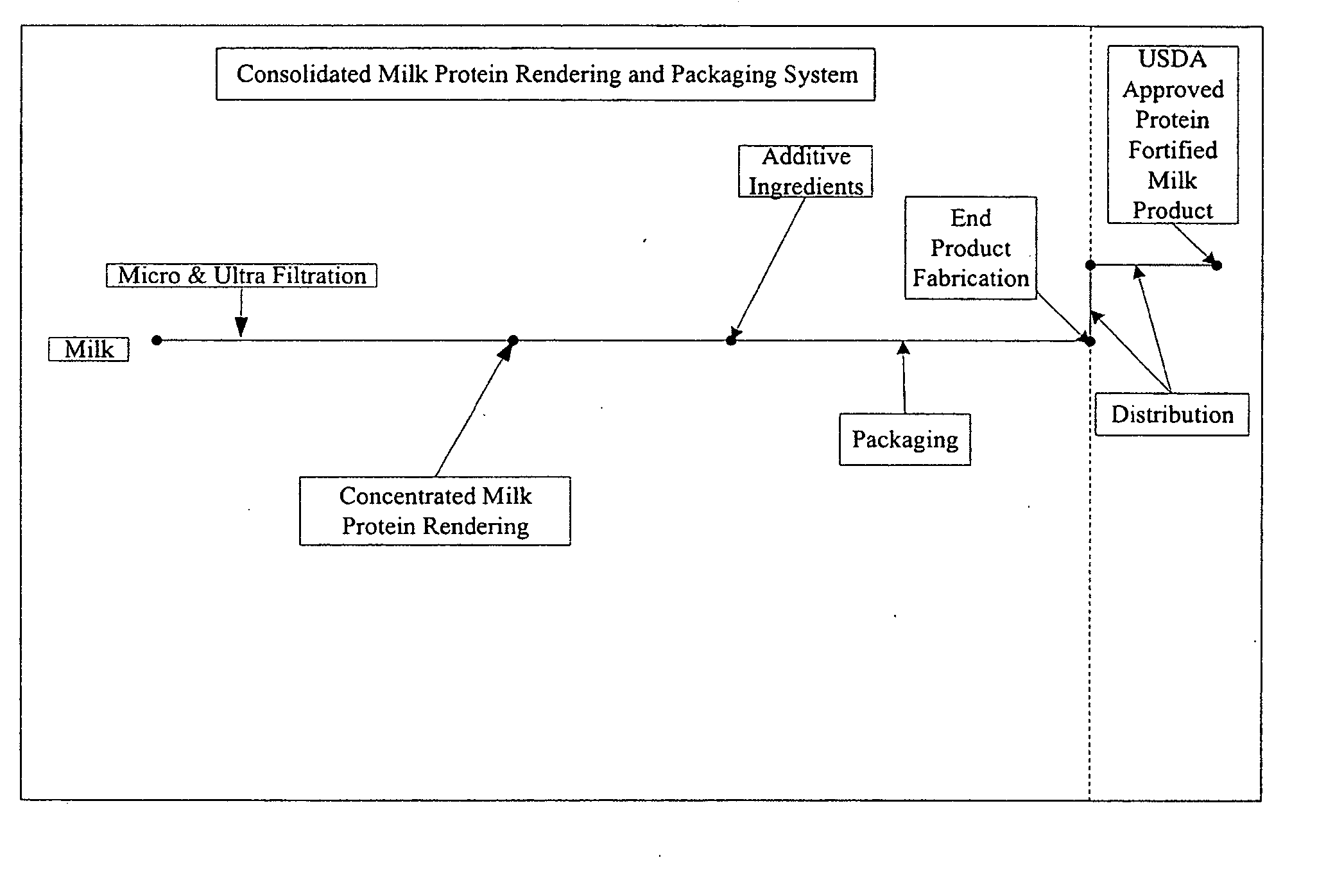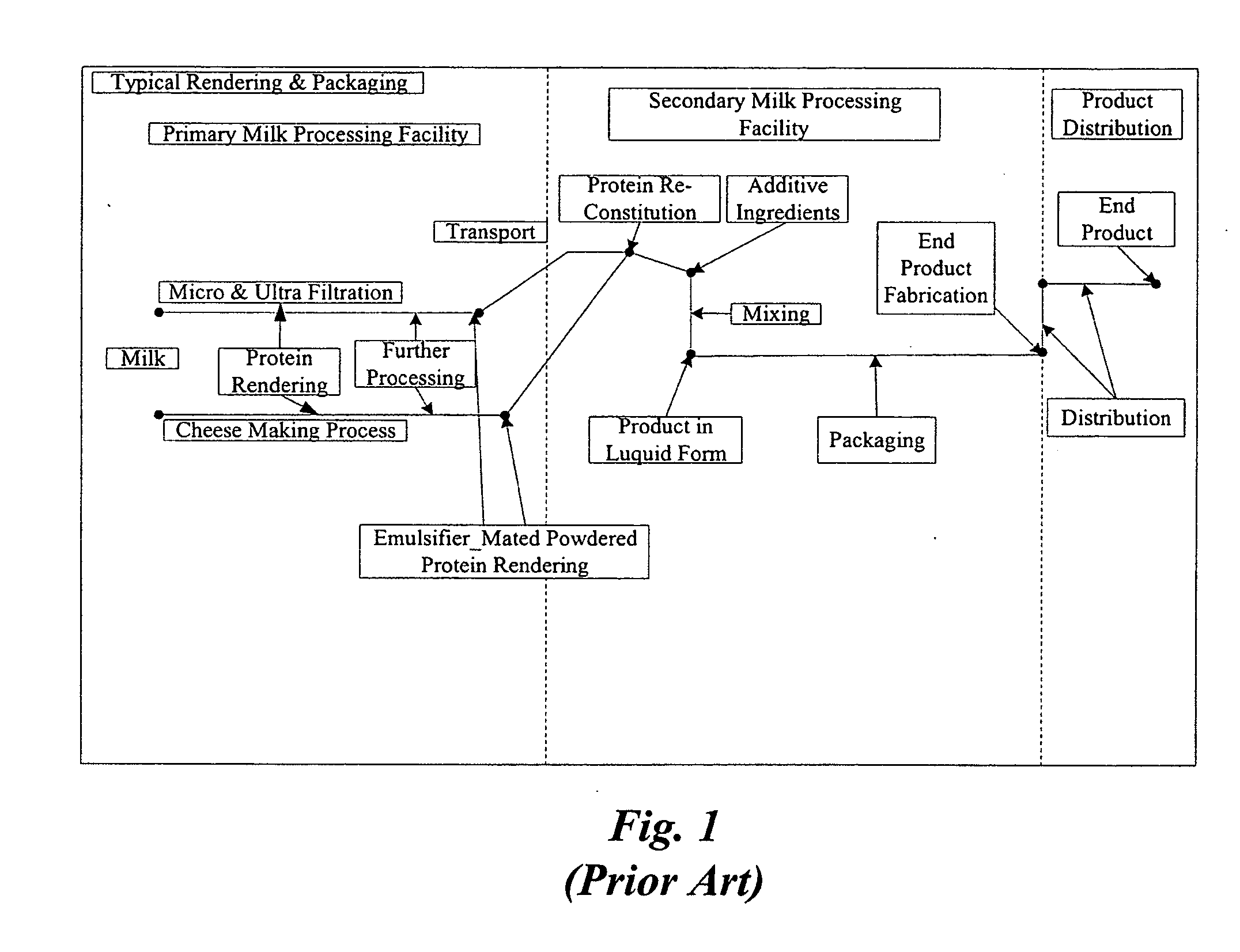Concentrated-protein food product and process
a technology of concentrated protein and food products, applied in the field of methods and systems for producing milk-based food and beverages, can solve the problems of loss of the ability to produce usda approved products, degrading the overall quality and physical structure of proteins, and high capital investment in processing and manufacturing plants, etc., to achieve no or low fat, no or high protein
- Summary
- Abstract
- Description
- Claims
- Application Information
AI Technical Summary
Benefits of technology
Problems solved by technology
Method used
Image
Examples
example 1
[0102] About 100 gallons of raw milk 602 was centrifuged to separate the cream 604 from the non-fat milk 606. The non-fat milk 606 was preheated to 50° C. and processed through a cross-flow microfiltration plant containing several ceramic membrane elements each with a pore size of 0.1 microns. The system was operated at a high cross-flow velocity in the UTP mode. The permeate 616 flow rate was maintained at 90 L / h and the retentate 614 flow rate was maintained at 45 L / hour to result in a 3× concentration factor throughout the run. Concentration factor may be defined as the volume of feed divided by the volume of retentate. The pressures were maintained approximately as follows: feed inlet of 4.4-4.5 bar, feed outlet of 2.4-2.5 bar, permeate inlet of 4.0-4.1 bar, permeate outlet of 2.2-2.3 bar; these pressures were adjusted as needed during the operation to maintain the required flows. The retentate 614 was collected, cooled and stored refrigerated in suitable containers. In some cas...
example 2
[0105] The products of this invention may contain less lactose per unit of calcium or protein. Regular skim milk has a lactose-to-calcium ratio of 39, while the 3× microfiltered milk shown in Table 1 has a lactose / calcium ratio of 16. To produce a reduced-lactose product, then the retentate may be subjected to diafiltration as illustrated in FIGS. 12 and 13. Table 3 shows the effect of adding water or a simulated milk ultrafiltrate (SMUF), as defined and formulated by Jenness and Koops (1962), as a diafiltration fluid as defined and formulated by Jenness and Koops (1962) to the 3× retentate 614 of Table 1. In this example, diafiltration liquid is added at a rate equal to the rate of removal of permeate 634 and is expressed as the percentage of the starting volume of milk 606. As shown in Table 3, diafiltration 622 results in a slight reduction in protein, due to removal of the remaining MSP in the MF retentate, and a large reduction in lactose content depending on the degree of diaf...
PUM
 Login to View More
Login to View More Abstract
Description
Claims
Application Information
 Login to View More
Login to View More - R&D
- Intellectual Property
- Life Sciences
- Materials
- Tech Scout
- Unparalleled Data Quality
- Higher Quality Content
- 60% Fewer Hallucinations
Browse by: Latest US Patents, China's latest patents, Technical Efficacy Thesaurus, Application Domain, Technology Topic, Popular Technical Reports.
© 2025 PatSnap. All rights reserved.Legal|Privacy policy|Modern Slavery Act Transparency Statement|Sitemap|About US| Contact US: help@patsnap.com



